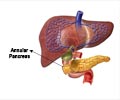Ann Palliat Med
A novel timesaving and semiquantitative method for radionuclide hepatobiliary scintigraphy for suspected biliary atresia.
Zhou H, Li J, Wei H, Li A, Wang X, Zhang X, Lu Q, Chen S, Wei Z
To optimize the performance of the hepatobiliary scintigraphy (HS) for suspected biliary atresia (BA) using a timesaving and semiquantitative method w ...
Read More
Source: PubMed
Pediatr Radiol 2020 Jan 23
The role of sonography in differentiating congenital intrinsic duodenal anomalies from midgut malrotation: emphasizing the new signs of duodenal and gastric wall thickening and hyperechogenicity.
Hameed S, Caro-Domínguez P, Daneman A, Zani-Ruttenstock E, Zani A, Navarro OM
The clinical and plain radiographic differentiation of congenital intrinsic duodenal anomalies (atresia, web, stenosis) from intestinal malrotation is ...
Read More
Source: PubMed
J. Pediatr. Surg. 2019 Dec 28
Quality of life outcomes in children born with duodenal atresia.
Vinycomb T, Browning A, Jones MLM, Hutson JM, King SK, Teague WJ
The aim of this study was to determine long term quality of life (QoL) outcome for children who underwent surgery for duodenal atresia (DA). ...
Read More
Source: PubMed
Eur J Med Genet 2020 Jan 14
Expanding the phenotype and the genotype of Stromme syndrome: A novel variant of the CENPF gene and literature review.
Alghamdi M, Alkhamis WH, Jamjoom D, Al-Nafisah G, Tahir A, Abdouelhoda M
This report describes siblings with Stromme syndrome, a rare genetic condition that primarily presents with a triad of intestinal atresia, cranial and ...
Read More
Source: PubMed
Case Rep Obstet Gynecol
Prenatal Diagnosis of Umbilical Cord Ulcer: A Report of Two Cases.
Katsura D, Moritani S, Tsuji S, Hayashi K, Yamada K, Tokoro S, Suzuki K, Kimura F, Murakami T
Umbilical cord ulcer is related to fetal intestinal atresia or meconium; perforation of the ulcer causes fetal deterioration leading to fetal and neon ...
Read More
Source: PubMed
Ann Palliat Med
A novel timesaving and semiquantitative method for radionuclide hepatobiliary scintigraphy for suspected biliary atresia.
Zhou H, Li J, Wei H, Li A, Wang X, Zhang X, Lu Q, Chen S, Wei Z
To optimize the performance of the hepatobiliary scintigraphy (HS) for suspected biliary atresia (BA) using a timesaving and semiquantitative method w ...
Read More
Source: PubMed
Pediatr Radiol 2020 Jan 23
The role of sonography in differentiating congenital intrinsic duodenal anomalies from midgut malrotation: emphasizing the new signs of duodenal and gastric wall thickening and hyperechogenicity.
Hameed S, Caro-Domínguez P, Daneman A, Zani-Ruttenstock E, Zani A, Navarro OM
The clinical and plain radiographic differentiation of congenital intrinsic duodenal anomalies (atresia, web, stenosis) from intestinal malrotation is ...
Read More
Source: PubMed
J. Pediatr. Surg. 2019 Dec 28
Quality of life outcomes in children born with duodenal atresia.
Vinycomb T, Browning A, Jones MLM, Hutson JM, King SK, Teague WJ
The aim of this study was to determine long term quality of life (QoL) outcome for children who underwent surgery for duodenal atresia (DA). ...
Read More
Source: PubMed
Eur J Med Genet 2020 Jan 14
Expanding the phenotype and the genotype of Stromme syndrome: A novel variant of the CENPF gene and literature review.
Alghamdi M, Alkhamis WH, Jamjoom D, Al-Nafisah G, Tahir A, Abdouelhoda M
This report describes siblings with Stromme syndrome, a rare genetic condition that primarily presents with a triad of intestinal atresia, cranial and ...
Read More
Source: PubMed
Case Rep Obstet Gynecol
Prenatal Diagnosis of Umbilical Cord Ulcer: A Report of Two Cases.
Katsura D, Moritani S, Tsuji S, Hayashi K, Yamada K, Tokoro S, Suzuki K, Kimura F, Murakami T
Umbilical cord ulcer is related to fetal intestinal atresia or meconium; perforation of the ulcer causes fetal deterioration leading to fetal and neon ...
Read More
Source: PubMed






